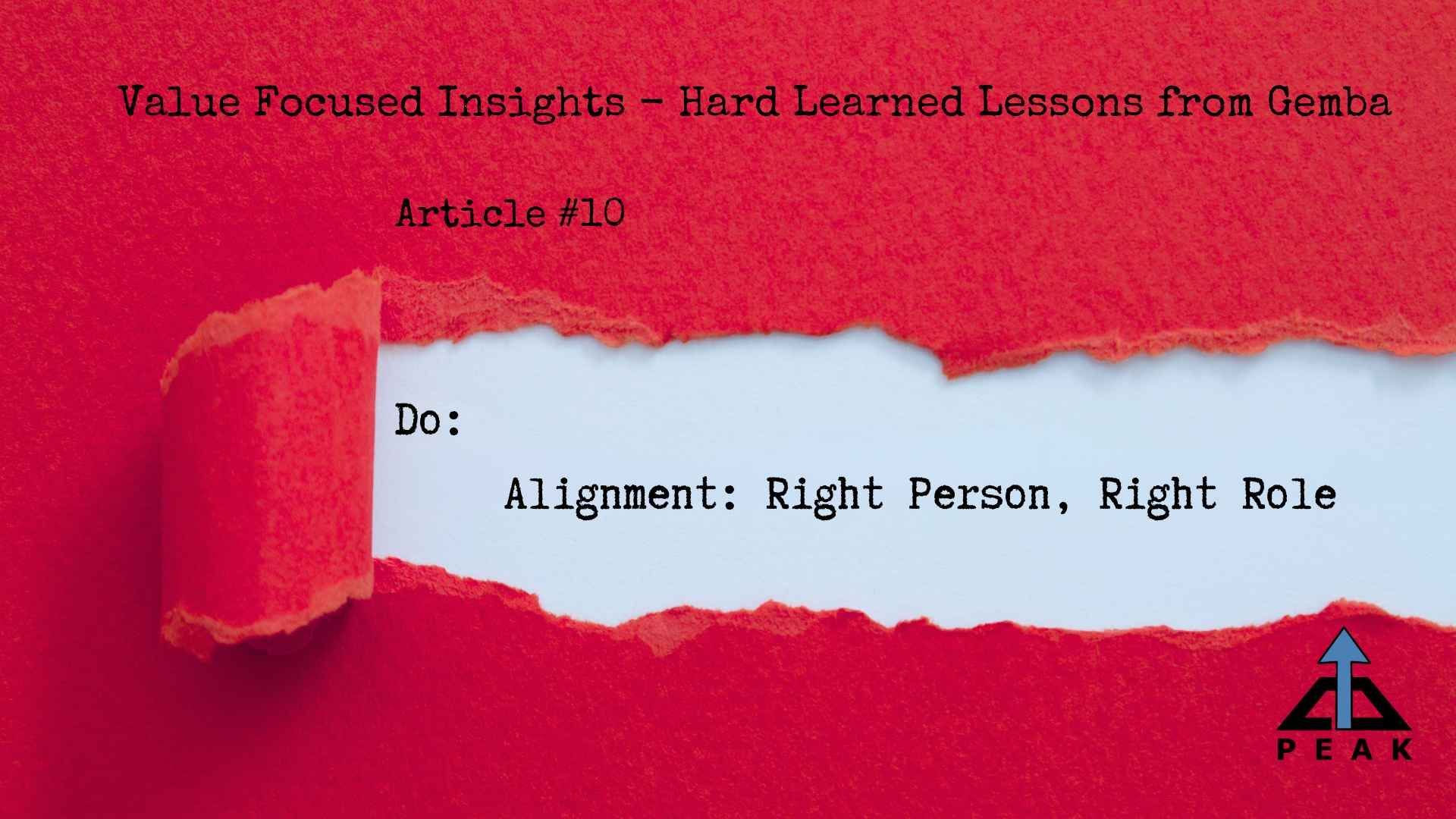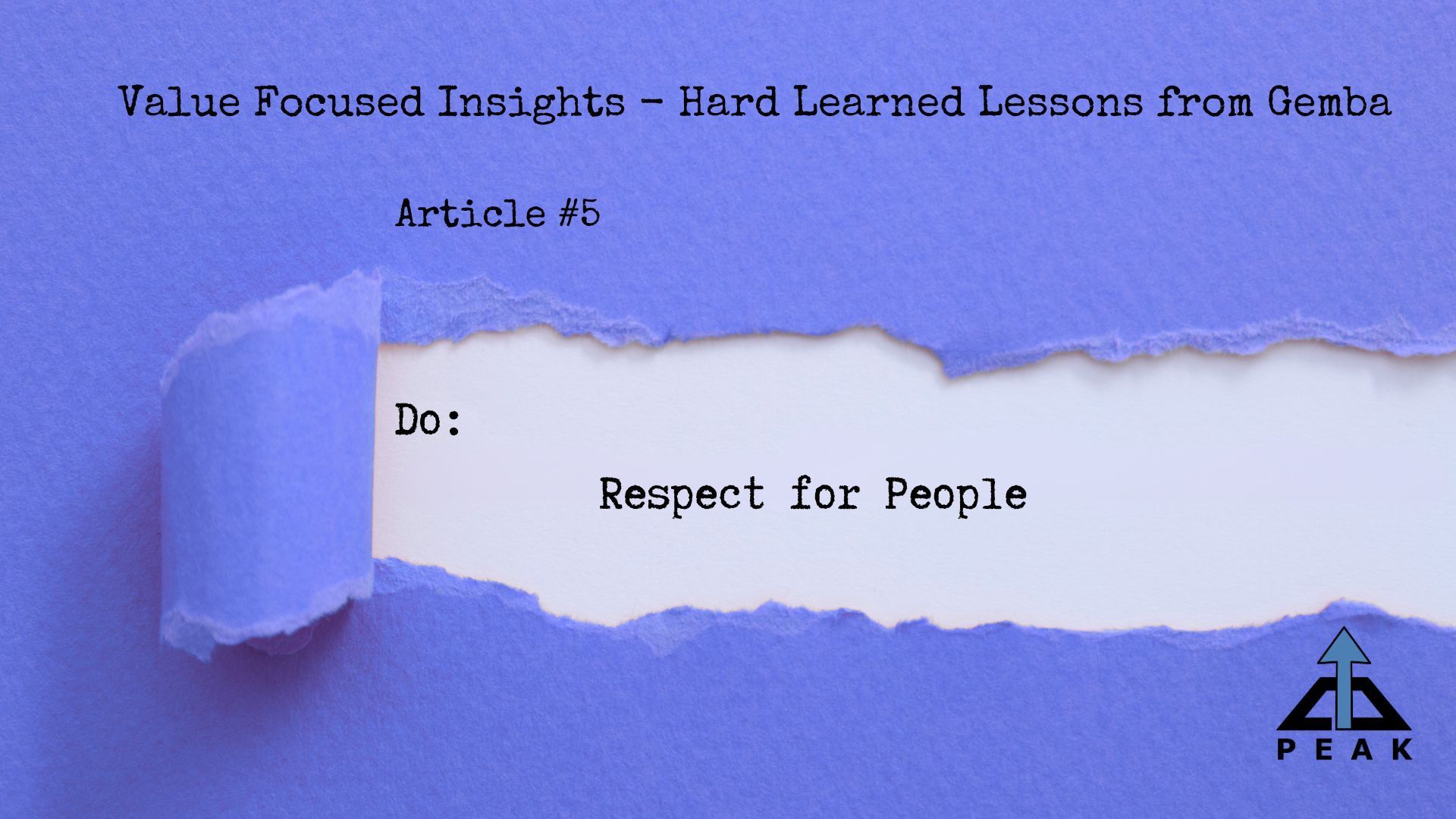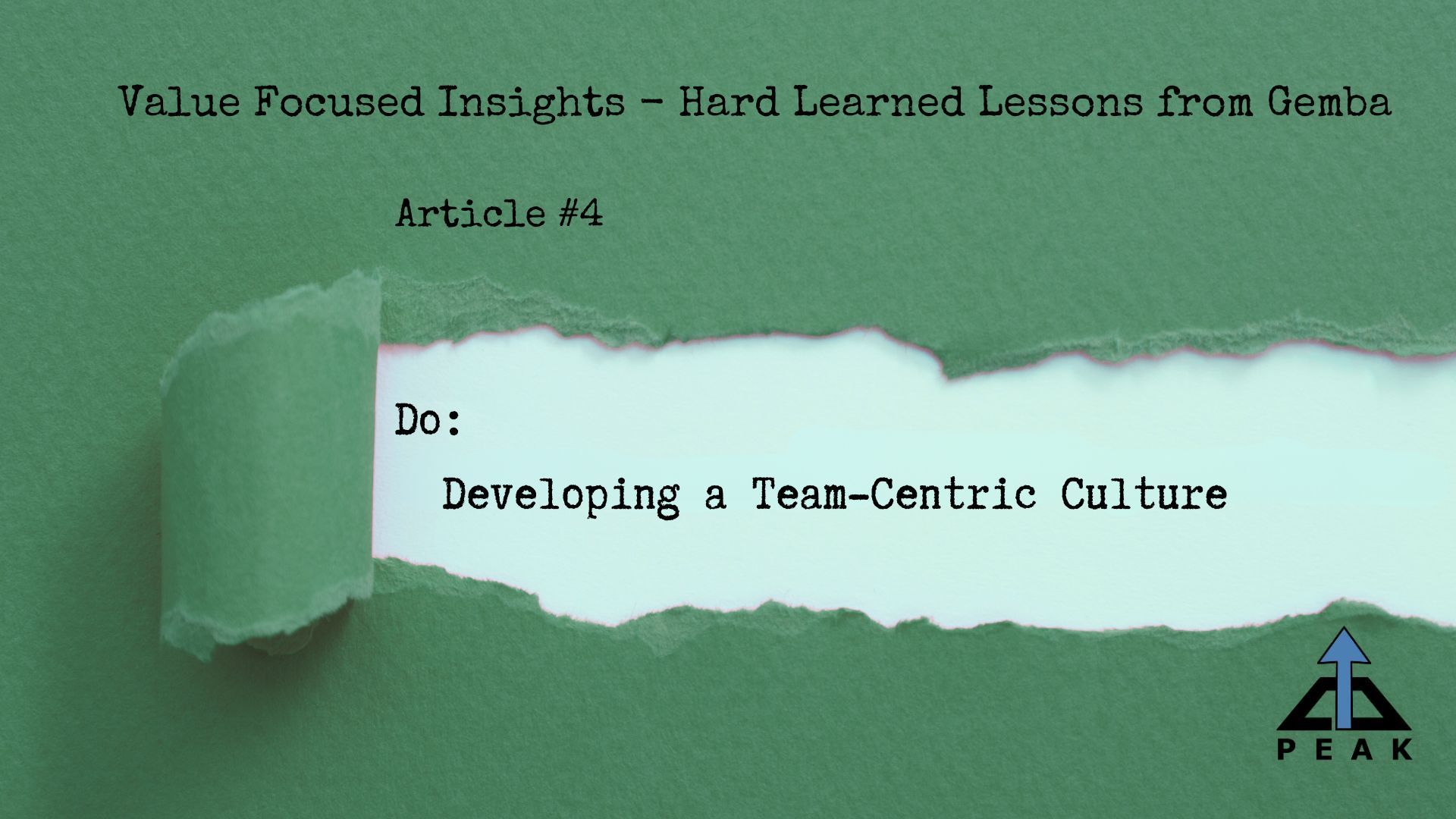Feedback Loops => Error Reduction
Tim Upchurch
If you are like most organizations, you have too much rework and/or defects. It should come to no surprise that most processes do not have good standardized work. In theory, this should be very easy to see and deal with, but other things tend to consume our time. As a result of bad quality, we have to make more to meet demand or stop what we're doing and fix something. This puts us behind pace and have to throw more resources to catch up. In some value streams, poor quality can go undetected until much later downstream.
In some cases, final quality is hidden from view until right before packing! These firms use inspection only at the end of the process as a catch-all and pay the price. Poor quality moves unnoticed as it travels the value stream, adding significant costs along the way until they decide to deal with it.

In their groundbreaking HBR article, "Decoding the DNA of the Toyota Production Systems", @Steven Spear and @H. Kent Bowen clearly laid out four rules that simplify lean philosophy at Toyota. Rule 1 discusses the requirements needed for each activity, which we commonly refer to as standardized work. It states that if the activity is completed as specified, the good or service will be defect free. Rule 2 is concerned with the connections between suppliers and customers. Ideally, they should be direct and have clear communication to send requests and receive responses. Rule 3 deals with defined flowpaths and Rule 4 shows how to go about making continuous improvements.
If you are like most organizations, you have too much rework and/or defects. It should come to no surprise that most processes do not have good standardized work. In theory, this should be very easy to see and deal with, but other things tend to consume our time. As a result of bad quality, we have to make more to meet demand or stop what we're doing and fix something. This puts us behind pace and have to throw more resources to catch up. In some value streams, poor quality can go undetected until much later downstream.
In some cases, final quality is hidden from view until right before packing! These firms use inspection only at the end of the process as a catch-all and pay the price. Poor quality moves unnoticed as it travels the value stream, adding significant costs along the way until they decide to deal with it.
Most people who come to work want to do a good job. The people on the front lines take a lot of pride in the quality of the work they do. Nobody wants the fear and drama that goes with making poor quality. In the absence of good feedback, they will default to what their ego tells them - and assume that they are doing things correctly. The defects and rework all over the place are the result of others not performing the work properly. Afterall, if there were causing bad quality, wouldn't their supervisor tell them?
The sad truth is, most workers live in a world of limited feedback. On your next gemba walk consider asking the following questions:
- "What is your quality reject rate?"
- "What is your yield compared to other operators?"
Unfortunately, we often treat our workforce as if they are fragile and we won't give them the information needed to get better. This is a lack of trust that should be corrected. Somewhere along the line we have allowed the "blame game" to enter our management philosophy and connected bad quality with bad people. This is incorrect - bad quality is a result of poor processes. And what about poor processes? They are a result of bad management practices and thinking.
Lean thinking means we respect people by making sure that time spent at work is productive. We show that we value their time by making sure that our processes are sound. When issues occur, we need to assume there is a gap in our processes that needs correcting. It is not a who, it is a how.
If your standardized work is not good enough, then you can adjust your Rule 2 thinking to compensate for it. Often you will know it by hearing certain words in your training program like "skill-level", "technique" or "feel". These are indications that your process is not robust and relies on people NOT making mistakes. In these cases, feedback is probably needed. It should be immediate, clear and provided 100% of the time. It is a countermeasure for the gaps in your Rule 1, and will prevent many larger problems from developing later on.
The better, quicker and complete the feedback is - the faster improvements can happen. You need to be transparent with the workforce. I cannot stress enough that when good workers know that they produce bad quality, they become engaged, and take the initiative to find out how to do better.
I once worked in a process that had extremely tight quality requirements. A consequence of that, coupled with challenges in process control led to high defect rates. Over time, an entire team was added that only performed rework operations. Unfortunately, their success rate was very poor, resulting in multiple rework loops for many products. Delivery and excessive labor costs were continual challenges. Management assigned a team to create an A-3 to reduce the multiple rework loops. We quickly discovered that no operator knew their pass/fail rate. Each of them recognized that things were bad, but didn't understand their contribution to the overall problem. They all assumed it was the other guy who created the problem. No reflection meant no changes. When we provided them with their individual high reject rates - they quickly told us to provide them a better way to know if they'd performed the work correctly. In addition, we ran a few experiments and determined that our rework process wasn't optimal. We changed the flow to correct the process and added feedback immediately after performing their work 100% of the time. Within a week, multiple rework loops were virtually eliminated.
Your process is your hypothesis. Each cycle is a test. Explain the expectations why following the standard work is vital. When issues arise seek to correct or fix your processes so that people can once again follow the standardized work. Simple PDCA - Plan, Do, Check, Act.
Without feedback, improvement is so difficult to accomplish. The journey towards lean and a culture of continuous improvement begins with acknowledging the importance of standardized work and respecting people enough to provide them meaningful and actionable feedback. Trust in your team's capabilities, empower them with direct knowledge, and watch as the ripple effect of positive change transforms your processes. Remember, it's not about pointing fingers; it's about refining how we work together.
Peaks and Valleys.....












